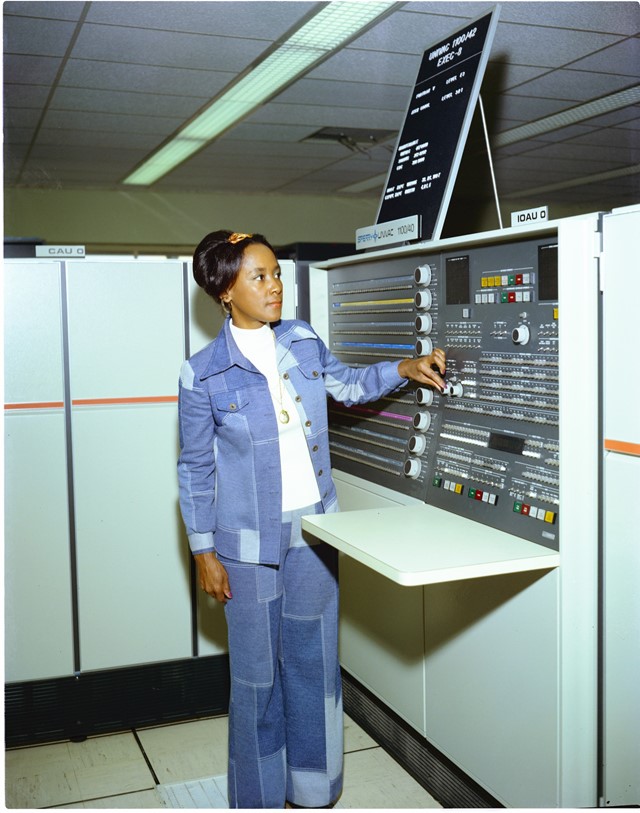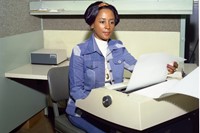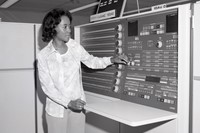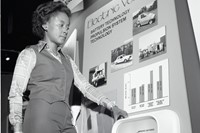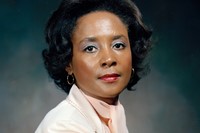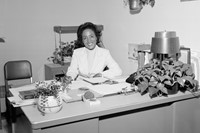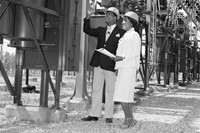As an African American woman working at NASA in the 1950s, Annie Easley ushered in a new way for women to work and dress
Before the introduction of machine-based computer sciences, ‘human computers’ were relied upon to solve and execute complex mathematical equations – that is, people with superior mathematical skills who would do workings out by hand to forward research. This was the case at NASA in 1955 – or NACA, the National Advisory Committee for Aeronautics, as it existed until 1958 – when Cleveland resident Annie Easley applied for a job as a ‘human computer’, having read a newspaper article about them. The former pharmacology student had moved to Ohio with her husband from Birmingham, Alabama, and when she got the job at NACA’s Lewis Flight Propulsion Laboratory she was one of 2,500 employees – only four of whom were African American.
Easley’s career at NASA would stretch to 34 years. She worked as a mathematician and computer scientist initially, before the introduction of electronic computers allowed her to develop and implement code and become a programmer, eventually working on rocket sciences and battery technologies for cars (the likes of which were implemented in some of the first hybrid vehicles). In an age of political and social tension – she developed her career during the years of the civil rights movement, when women in the workplace was not the norm, and at NASA during the Cold War and the Space Race – Easley became something of a trailblazer as she navigated her life and career. “When people have their biases and prejudices, yes, I am aware. My head is not in the sand. But my thing is, if I can't work with you, I will work around you,” she told Sandra Johnson in 2001. “I was not about to be so discouraged that I'd walk away.”
Seminal Moments
As well as the mathematical and scientific advances that Easley and her team achieved at NASA, she pioneered a new age for women in the workplace. When asked what she might wear to work on a daily basis, Easley attributes her sense of wanting to “dress up” to her southern roots. “Well, in the south, I was used to everyone dressing up. Dressing up in the business world, that’s what I remember,” she recalled. At NASA, however, things were relatively relaxed for her male colleagues: “Now, I do remember, at the time, I thought it was casual because some of the guys wore plaid shirts rather than the white shirts.”
While there was no official dress code – “of course, there were no pants. We did not wear pants at that time. Women did not wear pants,” she said – it was 1970 when Easley first wore a trouser suit to work, pioneering the trend and making it easier for her female colleagues to do the same. “I talked to my room supervisor about it – because we’d started to wear pants in the outside world, and I said something to her about, ‘I have a pants suit. I’d really love to wear it to work.’ So we made a pact that we’d come to work the next day in pants, and it did cause quite a stir, but there was one woman who said, ‘I was just waiting for the first one to wear pants.’” While it’s clear that this move was significant – to both Easley and the wider working world – the freedom to wear these clothes meant that the spotlight shifted from her appearance to her intellectual output.
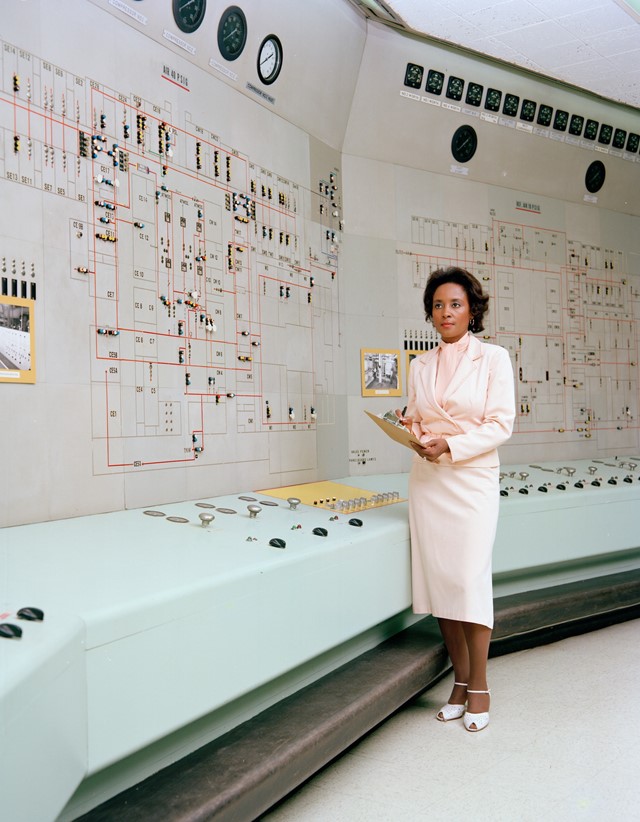
Defining Features
Going one step further to tackle discrimination at NASA, Easley was appointed Equal Employment Opportunity Counselor, a role which allowed her to address the fact that many employees were ignorant of prejudices that were prevalent in society and, by extension, the workplace. “I think there were still the die-hards who didn’t see that there were problems that needed to be solved. I think there were people who felt, ‘This is the way it always was and it’s doing fine,’” she remembered. “It’s like, it’s someone else’s problem, it’s not ours.” By addressing such issues, others in the company were able to detail on widespread grievances: discriminations felt by women, ethnic minorities and older employees.
Raised by a single parent in Birmingham, Alabama, Easley inherited her mother’s hardworking positivity. She would later recall her mother’s influence, encouraging others with wise words such as: “You’re never too old, and if you want to, as my mother said, you can do anything you want to, but you have to work at it”. Her career change from pharmacy to computer sciences – and before that, she had wanted to become a nurse – instilled in her a belief that she could maintain a career in which she excelled, and which she enjoyed. “I just have my own attitude. I’m out here to get the job done, and I knew I had the ability to do it, and that’s where my focus was,” she said. So admiring of the work NASA was doing, Easley would engage with university and school students on education outreach and tutoring programmes, encouraging them to pursue an education and consider themselves in a job like hers.

She’s an AnOther Woman Because...
Careers such as Easley’s came into the spotlight with recent films like Hidden Figures, documenting the role of African American ‘human computers’ at NASA in the 60s and 70s. Her transition from using her head for workings out to operating and coding computers that did the mathematics later was no mean feat, especially for an African American woman in the mid-20th century. She remembered the calibre of staff at NASA with admiration: “I must add, one of the great things about working here at NACA and NASA was the depth of talent that you were surrounded with, and that was not just the scientific talent, but it’s just a broad spectrum.” Easley of course falls into this category of varied skill – her tackling of discrimination, exemplary intellect, and expertise at, for want of a better phrase, the ‘work-life balance’ (she repeatedly referred to the fact that she had a life outside NASA, and pioneered social activities like skiing trips with her colleagues) speak to her extraordinary spirit. And did so wearing patchwork denim trousers and baby pink skirt suits – an AnOther woman indeed.
Dress Like a Woman by Vanessa Friedman and Roxane Gay, published by Abrams Books, is out now.
